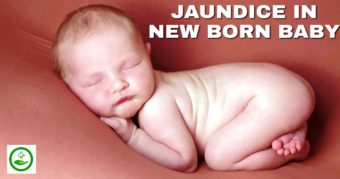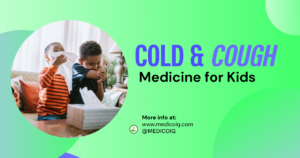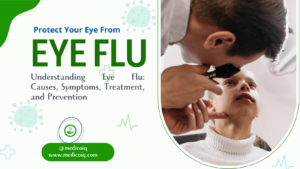Table of Contents
Jaundice In New Born Baby
Jaundice wand is derived from the trench ward James which means yellow.
Definition
” Jaundice is the decline as an important and common symptom ai liver disease it is a clinical term used your the yellowish discoloration ai the mucous membrane and skin due to increase blood bilirubin level”
“Jaundice is the yellowish discoloration of the skin, mucous membrane and the whites of the eye, (scalar) caused by the elevated level of bilirubin in the blood”.
“Jaundices define as it is not technically a disease but rather it is a visible sign of an underlying condition causing an increased level of bilirubin in the blood.”
TYPES
Jaundice In New Born Baby is five types
- Physiological Jaundice
- Pathological Jaundice
- Breastfeeding Jaundice
- Hematological Jaundices
- Clinical Examination Jaundices
Physiological jaundice
Physiological jaundices is caused by an increased bilirubin level in the blood due to the immaturity of the liver plus the destruction of a red blood cell.
Pathophysiological jaundices
Jaundices is considered pathological if it presents 24 after birth the total serum bilirubin level rise by more than 5 ML /dl (36mol/L) / day.
Breastfeeding
Breastfeeding jaundices is caused by mild dehydration contribution lo jaundices because it makes removing bilirubin from the body even harder for babies’ immaturity system.
Hemolytic jaundice
Hemolytic means a breakdown of the red blood cell. The most common cause of ABO incompatibility glucose -6 phosphate.
Clinical examination
Newborn has detected the yellow skin around the thing should have argent laboratory confirmation of bilirubin level.
Risk factors
- Preterm babies.
- Mother with diabetes.
- Congenital Infection.
- Weight is less than 250gm at babies.
- A blood group is incompatible with their mother.
Causes
- Obstruction of the bile duct.
- Acute hepatitis.
- Hemolytic anemia.
- Breastfeeding jaundices.
- Increase the bilirubin level in blood.
- Jaundices liver function.
Pathophysiology of jaundice
Due to etiological factors
⇓
Increase the destruction of RBCs (fetal RBCs) lifespan 30 days.
⇓
Immature liver function.
⇓
Lack of albumin binding protein.
⇓
Lack of increase unconjugated bilirubin
⇓
Increase blood (serum) bilirubin level
⇓
Jaundices Increase picks level 8-12 mg /dl between 4-7 days.
Sign and Symptoms
- Yellow skin color.
- Yellow eye.
- Sleepiness.
- Brown urine.
- Poor feeding in infants.
- High pitch cry.
- Vomiting.
- Excess bilirubin in the blood
- Seizure.
- Change in muscle tone.
- Fever.
- Weakness.
Diagnostic Evaluation
HISTORY TAKING
Collect the data of the client will be asked about any previous history and present history.
PHYSICAL EXAMINATION
Neonate jaundices first become visible in the face and forehead identification is aided by the pressure on the skin color secure than visible.
BLOOD SERUM BILIRUBIN TEST
A bilirubin test is used to help determine the causes of jaundices yellowish color of skin.
COMPLETE BLOOD COUNT
A blood sample is used to culture bacteria that may be responsible for the infection.
LIVER FUNCTION TEST
The liver function test is used for diagnosing a viral infection because of liver play a role of different in the body.
Medical Management
Phototherapy
The use of phototherapy was first discovered accidentally at Rochford Hospital in excess England Phototherapy is the most common treatment for reducing the high bilirubin level that causes jaundices in a neonate. Phototherapy is a process of using light to eliminate bilirubin in the blood. Baby skin color absorbs these light waves. Tese’s light wave is absorbed by the baby’s skin and changes bilirubin into the product.
Home Care Management
- Continue breastfeeding
- Use clean and safe water for drinking.
- Wash hand before and after feeding.
- Give small and frequency feed.
- maintain strict personal hygiene.
Complication
Cerebral palsy
Several jaundices goes to untreated for too long it can cause a condition called kernicterus. It is a type of brain damage that can result from a level of bilirubin in body blood.
Problem maintain normal eye movement
People affected kernicterus have a tendency to gaze upward or from side of the side rather than strength ahead.
Hearing loss
Which can range from mild to several?
Poor development of teeth.
Learning difficulties.
Health Education
Personal hygiene
Advice the client relatives maintaining maintain proper personal hygiene such as living routine bathing, brushing etc.theire surrounding environment.
Medication
Proper advice about taking medication is one of the most important for improving health.
Rest & Sleep
Give proper rest and sleep 15 to 16 hours for the patient.
Exercise
Give proper exercise in the patient to help blood circulation is to improve the cholesterol level of the body.
Conclusion
Jaundice is easily diagnosable however requires quick and on the spot treatment. It not treated properly it leads to many complications. Currently, treatment options for jaundice include phototherapy, chemotherapy, and vaccination, hyperbilirubinemia, immunoglobulin, bilirubin meter exchange transplantation.








It’s a very informative articles. Thanks for this
Very good and helpfull article.